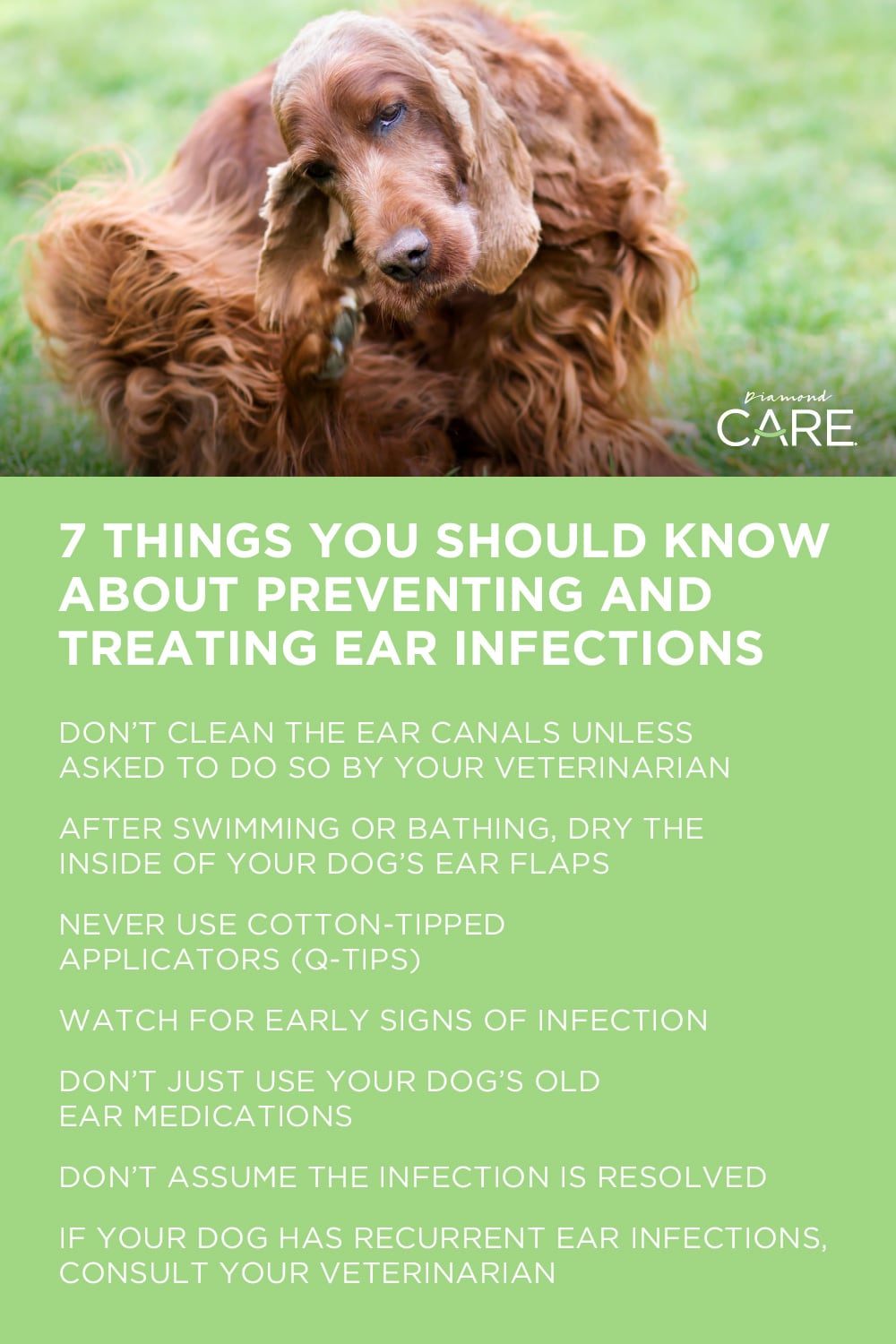Get a Jump on Spring Ear Infections
Tulips and daffodils might be your first signs of spring. But if you’re a dog owner, it might be something different: the jingle-jangle of ID tags as your dog vigorously shakes his or her head. The musty odor emanating from the ears, the constant itching and scratching at the head — all telltale signs of an ear infection.
Many dogs with sensitive skin, especially those with seasonal allergies, are more prone to ear infections in the spring. Why is that? And is there anything you can do to help prevent dog ear infections?
While middle or inner ear infections can cause more complications in dogs, let’s review the more common otitis externa, or inflammation/infection of the exterior ear canal, which includes the eardrum, or tympanic membrane, the ear canal and the ear flap, or pinna.
The canine ear: a design flaw
Human ears and canine ears have one thing in common: Healthy ears actually clean themselves. In a mechanism called epithelial migration, the skin lining the ear canal gradually moves from the eardrum toward the outside of the ear canal, carrying with it debris and wax.
But that’s where the similarities end. In people, the ear canal is horizontal, creating a straight tunnel from the outside to the eardrum. Dogs, on the other hand, have an L-shaped ear canal. From the outside, the canal runs vertically, then bends until it’s almost horizontal to the eardrum.
As you can imagine, that bend in the canine ear canal can make difficult for debris and moisture to be removed, creating the damp, dark environment where bacteria and yeast thrive. To complicate matters, breeds such as shar-peis, pugs and English bulldogs have an additional twist in the ear canal.
Pendulous ears, like those on cocker spaniels, basset hounds and retrievers, can prevent air from circulating into the ear canal, creating a humid environment. Other dogs, such as poodles, have hairy ear canals that retain debris and wax.
Other risk factors
It may be tempting to think that ear infections are mostly caused by bacteria or yeast. But in many cases, especially with chronic, recurring or seasonal ear infections, there’s often an underlying allergy at play. Treating and alleviating the allergy is ultimately what helps prevent ongoing ear infections.
Other inciting factors include parasites such as mites and foreign bodies like grass awns (barbed seeds made by some grasses). Dogs who love to swim may accumulate water in their ear canals, potentially putting them at risk for ear infections. Trauma to the ear canal — from aggressive cleaning or hair plucking — can interfere with epithelial migration and open the door to infections.
What you can do to help your dog
While you certainly can’t change the design of your dog’s ears, there are some things you can do:

RELATED POST: ALLERGIES: BODY DEFENSES GONE HAYWIRE
